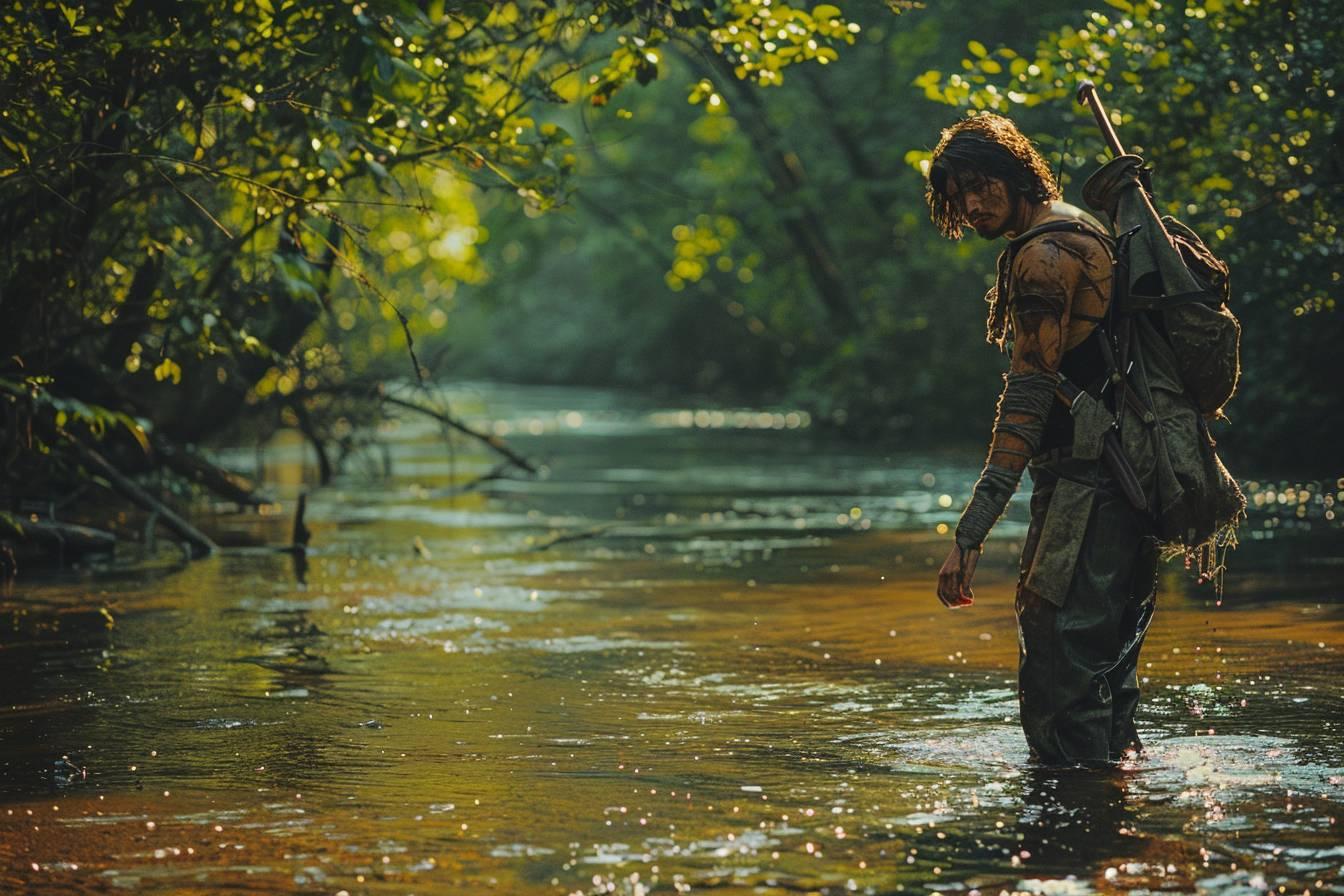“Wade in the Water” is much more than just a song. This African-American spiritual song, born in the 19th century, carries with it a rich and poignant history, intimately linked to the slave freedom struggle. Let’s delve into the origins of this iconic negro spiritual and examine how it became a symbol of resistance and hope.
The deep roots of a freedom song
“Wade in the Water” has its roots in 19th-century slave America. This negro spiritual was created by African-American slaves, skilfully blending African influences with Protestant religious songs. The structure of the song, with its characteristic alternation between soloist and choir, as well as its improvised passages, clearly reflects African musical traditions.
The text of “Wade in the Water” is inspired by biblical passages, notably the Exodus and the liberation of the Hebrew people. This reference is not insignificant: it enabled slaves to express their hope for freedom in a coded way, while appearing harmless to the ears of their masters. The song thus echoed their own quest for emancipation, while remaining anchored in an acceptable religious context.
Here’s an overview of the elements that shaped “Wade in the Water”:
- African musical influences
- American Protestant traditions
- Biblical references
- Slaves’ desire for freedom
- Need for secret communication
This fusion of elements gave birth to a powerful song with a profound, universal message that continues to resonate today.
A secret code for freedom
“Wade in the Water” was more than just a spiritual song. It played an essential role in the underground network known as the “Underground Railroad”. This secret system, set up by abolitionists, helped slaves escape to the northern states and Canada to win their freedom.
The very title of the song, “Wade in the Water”, served as a secret code for escaping slaves. It told them to hide in the water to escape the dogs of the slave hunters in pursuit. Water had the property of masking their scent, making their trail impossible for the bloodhounds to follow.
Harriet Tubman, an emblematic figure in the fight against slavery, is said to have used this song to guide fugitives to freedom. Born a slave in 1820 and deceased in 1913, Tubman became one of the main conductors of the “Underground Railroad”, helping many slaves to escape at the risk of her own life.
Here’s a chart summarizing the key elements of the song and its use:
| Element | Meaning |
|---|---|
| “Wade in the Water | Hiding in the water to escape pursuers |
| Biblical references | Camouflage of the real message |
| Musical structure | Facilitates memorization and transmission |
| Used by Harriet Tubman | Guide for slaves escaping to freedom |
In a similar way, “Wade in the Water” embodied the hope and determination of slaves in their quest for freedom, while serving as a practical tool for their escape.

The enduring legacy of a song of resistance
Over time, “Wade in the Water” became much more than just a tool for liberation. It has established itself as a true symbol of the struggle for freedom in the African-American community. Its powerful message and haunting melody have stood the test of time, inspiring many artists and activists.
The song has undergone numerous adaptations and revivals, notably in the jazz and gospel genres. These new versions have perpetuated its message while evolving it to resonate with contemporary struggles for equality and justice.
The impact of “Wade in the Water” extends beyond the musical sphere. In 2016, Compagnie 14:20 created a “new magic” show entitled “Wade in the Water”, inspired by the story of this song. This innovative production blends :
- Contemporary dance
- Stunning visual effects
- Original music by Ibrahim Maalouf
The show evokes the struggle against oppression through an immersive artistic experience, demonstrating the ability of “Wade in the Water” to inspire artistic creation far beyond its musical origins.
Today, “Wade in the Water” continues to be studied and interpreted, not only as a notable part of African-American musical heritage, but also as a historical testimony to resistance to oppression. Its message of perseverance and hope in the face of adversity still resonates strongly in our contemporary society, reminding us of the importance of the struggle for freedom and equality.
A song that spans the ages
“Wade in the Water” has stood the test of time, adapting and evolving while retaining its essence. This song, born under the most difficult conditions of slavery, continues to inspire and move more than a century and a half after its creation. Her remarkable career illustrates the power of music as a vector of memory and social change.
The story of “Wade in the Water” reminds us of the importance of preserving and passing on our cultural heritage. It also underlines the crucial role that art can play in the fight against injustice and oppression. This iconic negro spiritual remains a living testimony to human resilience and the relentless quest for freedom.
All in all, “Wade in the Water” is not just a song from the past. It is a living legacy, a continuing source of inspiration for present and future generations. It invites us to reflect on our shared history, and to continue the fight for a fairer, more equitable world.

